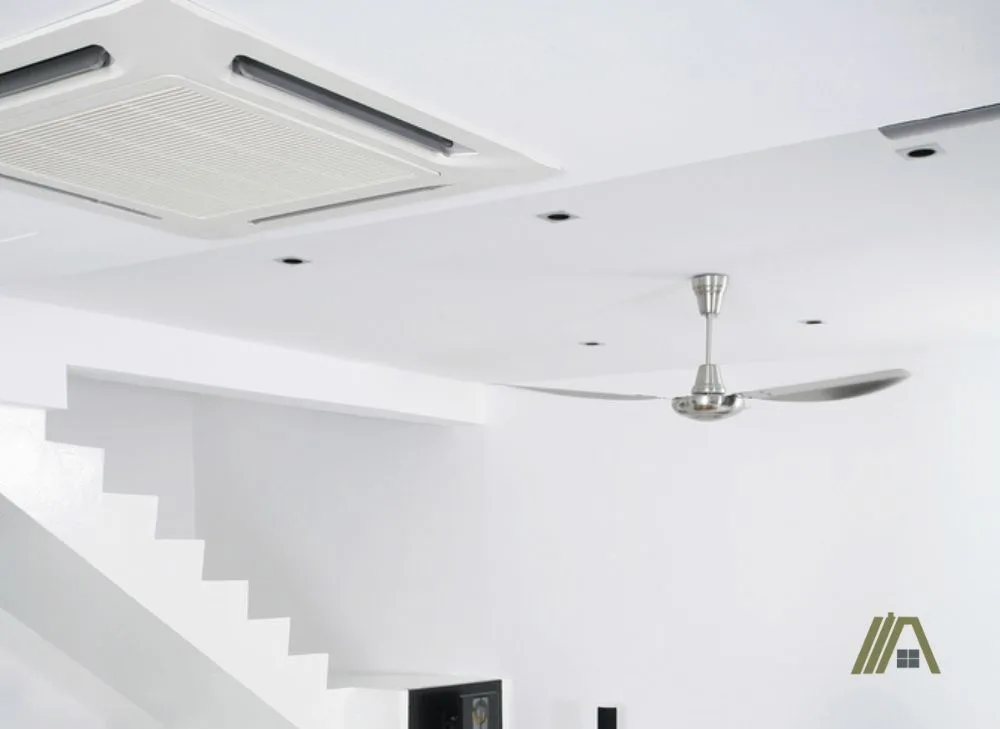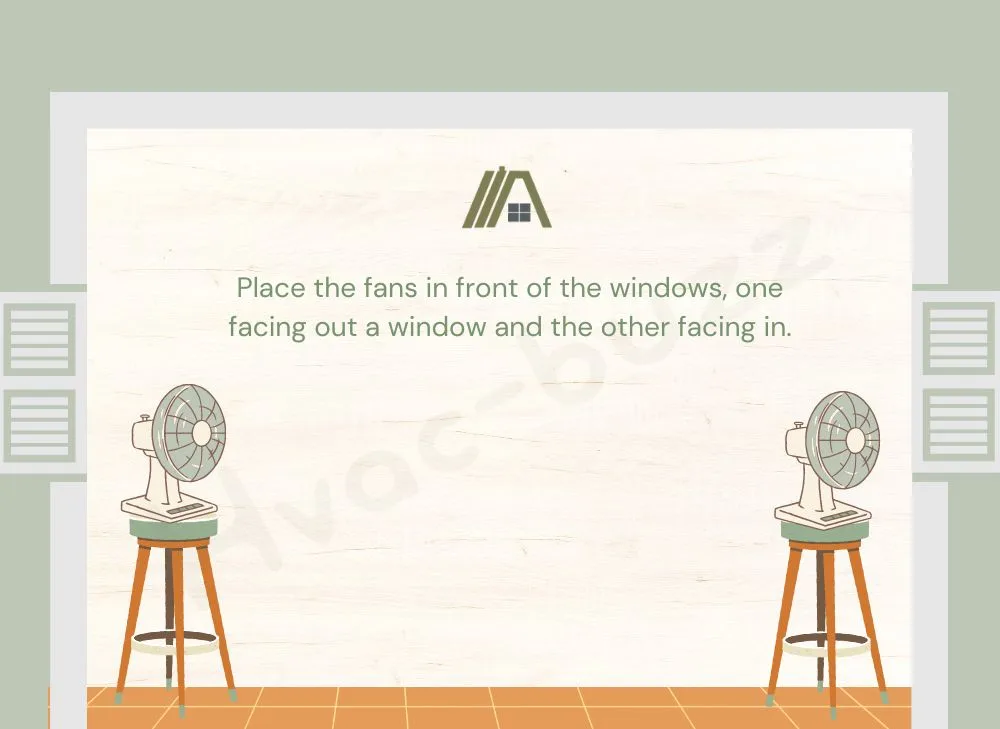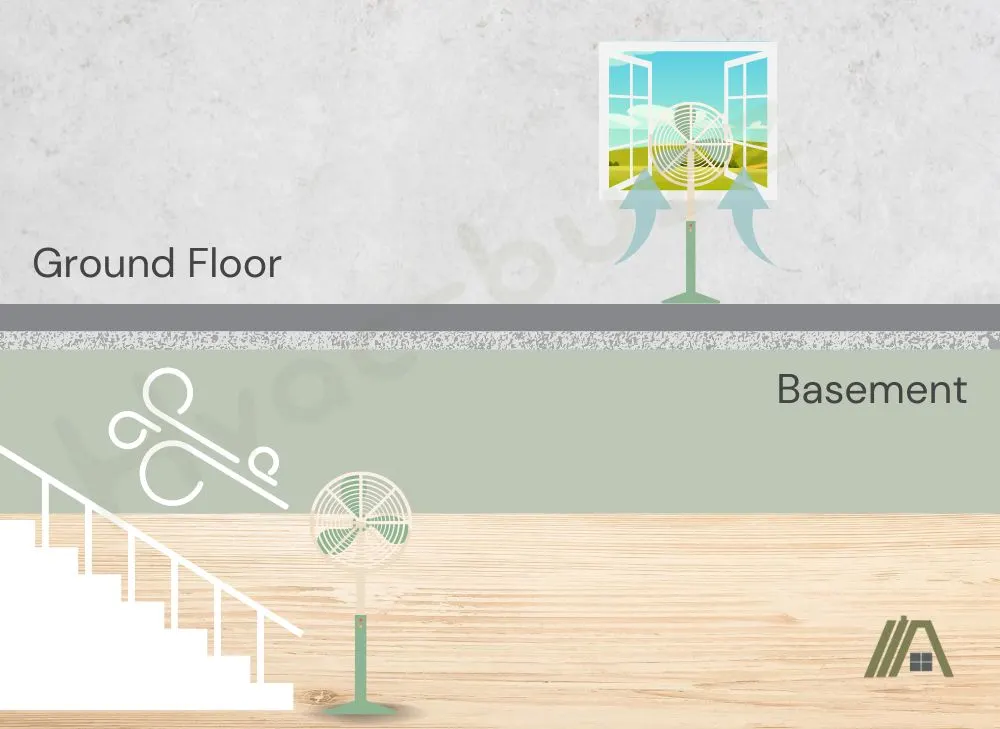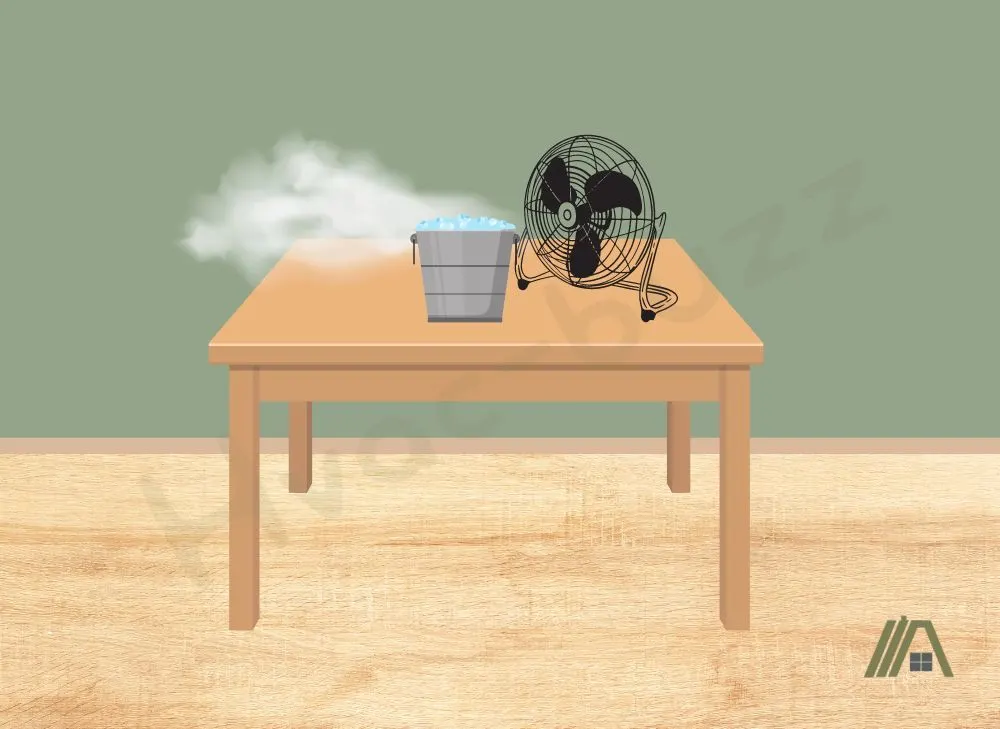Hang around the fan side of the internet for a while, and you might come across this puzzling piece of misinformation: fans can blow cold air. Despite the extensive information available on fans, there are still some websites that will tell you this while presenting themselves as good sources of information and advice.
Since a fan possesses no cooling apparatus, there is no way that a fan can cool air. You can easily read up on the basic functioning of fans, and you will find no credible source saying that it is anything more than air circulation and wind chill.

A fan cannot generate cold air, and turning it on is not the same as using an AC unit. All fans are designed to create airflow, which can move cold air from a different source and make it blow onto the occupants of a room. Otherwise, the cooling effect comes from the wind chill factor.
Fans Circulate Air and Create Wind Chill
A fan has pitched blades that rotate to move air around it and create a wind chill effect. Counterclockwise rotation (summer mode) pulls air in from above or behind the blades and pushes it out below or in front of the appliance.
Wind chill creates a feeling of being cooler by blowing air past you, but the air must be able to reach you, and this is also why you should consider the direction of a ceiling fan in summer.
Pair Fan With Air Conditioning
If you are looking for an elite cooling duo, you need look no further than a ceiling fan and air conditioning. This is the best (and arguably the only) way to make your fan blow cold air.

Ceiling fans are heralded for their low running cost, so your bank account won’t feel the pinch if you use them in tandem. In fact, despite the misconception that it is pointless, your fan and HVAC system can benefit in terms of efficiency.
The AC will provide cool air, while the fan distributes it. This prevents the natural separation of cold and warm air, which makes your HVAC system work harder to try and cool the whole room. As a result, the room is cooled much faster and more effectively, decreasing your utility bill.
While a fan cannot cool the room like the AC, when you combine the wind chill factor and the cold air from the AC, you can even mimic a lower setting on your thermostat (up to 4 ℉ lower) without having to turn it down those few degrees.
It can also help counteract poorly placed vents and registers. You might need to be a little creative with your fan setting, depending on where the vents and registers are, but it can make a massive difference.
While a ceiling fan really lends itself to this pairing, you can also use other options like pedestal, floor, tower, and desk fans to help circulate air. You just need to position them carefully if you don’t want them to encourage the cold air out of the room.
Pros and Cons
Pros
- Increases your HVAC system’s efficiency.
- Cools you and the room more effectively by combining both cooling mechanisms and air distribution.
- Can save you money from HVAC usage.
- Decreases energy usage.
- Can maximize the effectiveness of HVAC vents and registers.
- Cost of running the fan is minimal.
- Thermostat doesn’t need to be so low.
Cons
- Ineffective if the right setting is not used.
- Ineffective if you mismatch the ceiling fan direction with vent and register positions.
- Only benefit from the extra cooling sensation of the fan if it is blowing on you.
Use the Fan to Encourage Outside Air Inside
Although not as effective as using AC, using the fan with an open window is still a good method for cycling cooler air into your home. It does depend on the external temperature as well, at least in comparison to indoors. If it is as hot or hotter outside, you won’t have as much luck with getting cool air inside.
Cross ventilation is easy to create: open windows (or doors) on opposing ends of a room or in adjoining rooms while closing all others. This pushes air out of one and pulls it in the other. Using window, box, pedestal, or table fans will enhance this; using two will be most effective.
Place the fans in front of the windows, one facing out a window and the other facing in. If you are only using one fan, use it to help exhaust air from the room.

If you only have one window in the room, you can use other doors or windows in your home. Opening a window or door in the next room (provided they have an interleading door or opening) can be used to create cross ventilation. In this case, you can follow the same procedure with the fans as before.
In this case, however, if you are only using one fan, I suggest it be an in-facing fan in the room you are trying to cool. You can also place a fan in the entrance between the rooms to help blow air through.
A ceiling fan is not ideal for this, and any addition it makes will be minimal and ineffective; you may even block the cross breeze.
- HIGHLY PORTABLE - The Hurricane Classic 20 Inch Portable Floor Fan is a space-saving, portable design that’s ideal for homes, greenhouses, garages and workshops; the quiet-yet-powerful motor...
- 3 SPEED FAN - The quiet, powerful motor allows you to adjust for ideal air flow and set fan speed; runs at 2400 CFM and 1100 RPM on high. Fan design limits noise while maximizing airflow output.
- EASY TO STORE - he slim frame, adjustable feet, and power cord tucking compartment, make it easy to store when not in use. Use it in windows, on furniture or directly on the floor as needed.
- SPACE SAVING - A compact, space-saving design makes it easy to move it to areas that need it the most. Each box fan measures 20 in. x 20 in. x 3.5 in deep.
Last update on 2024-03-28 / Affiliate links / Images from Amazon Product Advertising API
Pros and Cons
Pros
- Doesn’t require a ceiling fan.
- Energy-efficient.
- Doesn’t require your AC to be on (you don’t even need an AC).
Cons
- Relies on the external temperature.
- Window positions in the room can impact effectiveness.
- Not comparable to cool air from your AC.
- Don’t always benefit directly from the fan’s wind chill.
- Windows cannot always be left open.
- Cross ventilation between rooms is only effective while the interlinking entrance is open.
Use the Fans to Bring Cold Basement Air Upstairs
While fans cannot generate cold air, they can be used to distribute the cold air that is already in your house. Cold air sinks to the lower areas of the house because it is denser, often resulting in the typical cold basement.
You can use methods such as strategically positioned fans to draw this cold air up from the basement and circulate it into other rooms.
Like the method above, you can use a natural process and improve airflow with fans. This time you will use a positive air pressure system, or the chimney effect.
Close all other doors and windows except one or two at the highest and lowest points of the house, making sure to leave the basement door open. Hot air will exit out of the highest windows, and this creates a pulling effect. As hot air leaves, it pulls air up from the rest of the house.
By placing a fan in or facing the upper windows, you can encourage the outward flow of hot air. You can also position fans aiming up the basement stairs to encourage the cold air upwards.

A ceiling fan at the top of a staircase (i.e., basement stairs) can also be a helpful option. When you run it on winter mode (clockwise), air is pulled up by the fan, which can aid the upward flow of air.
- This Super wall fan has create an air velocity of 4, 012 CFM.
- 3 speed high-torque, permanently lubricated motor with 3-speed rotary switches help you for different airflow.
- Thanks to the ball-bearing motors, these floor fans can run at least years under good caring.
- Reinforced wire grill for added safety. All-metal construction with aluminum blades make these fans as a good choice at workshops, basements, living rooms and garages.
Last update on 2024-03-28 / Affiliate links / Images from Amazon Product Advertising API
Pros and Cons
Pros
- Increases HVAC efficiency.
- Decreases workload of the HVAC system.
- Using existing cold air to cool instead of needing to generate more.
- Helps to warm up your basement.
- Helps balance the airflow and temperature throughout your entire home.
- Fans have low running costs.
Cons
- Hard to cool one specific room.
- Operating the air pressure system and AC simultaneously may exhaust conditioned air.
- Effectiveness of a stairway fan depends on mount type.
- Stairway fans are less effective when enclosed and not leading to an open area.
- Not as effective as AC for cooling a specific room.
Assessing Other Methods Suggested Online
1. Hang a Wet Towel Over the Fan
It was easy enough to test if hanging a wet towel over the fan would work. It just made the room moist. Now, I’m not keen on adding humidity to the equation of a hot room.
My guess is this method assumes that spinning the towel around on the ceiling fan will cool the water on the towel and help to cool the air in the room, which the fan can then distribute. Or, with a non-ceiling fan, the water will help to cool the air as it passes through the towel.
Aside from not working, there is also a problem with weight and aerodynamics (for a ceiling fan). Your fan is rated for a specific weight; adding a heavy wet towel can make things dangerous or ineffective. It can unbalance the blades or even bring down the entire unit.
Hanging a towel from your ceiling fan will impact its efficiency, which relies on specific sized and shaped blades to move air through them.
Covering a fan with a towel can affect airflow into and/or out of the fan, making it ineffective.
2. Place Ice in Front of the Fan
Ice emanates cold, which cools the air around it. The idea behind using a bowl of ice in front of the fan is that you can blow the ice-chilled air around the room or onto you, using the fan. Theoretically, it makes sense, at least to a certain degree. But, practically, you would need a lot of ice.

This is also limited in how well it can work; unless you can get your hands on a solid block of ice around the size of a dinner table, the effects won’t be noticeable enough to justify the effort.
Plus, you will be dealing with melting ice and will likely have to replace it often as it loses the fight against the hot room. I wouldn’t bother with the mess when you probably won’t even notice a temperature difference as any cold from the small-scale operation is overpowered before it can do anything for you.
3. Use a Humidifier With the Fan
When people recommend a humidifier to help you cool a room, we must assume that they are talking about cool mist humidifiers and not the traditional steam humidifiers.
Cool mist humidifiers don’t use heat to introduce water into the air. The delicate mist of cool water can also make people in the path of this spray feel cooler because the water droplets land on their skin and cool them.
However, the introduction of water into the air increases perceived air temperature more than it cools you down with the mist.
When it comes to steam humidifiers, there is no logic to this suggestion.
Adding water to the air as hot steam (which is what a humidifier does) will not make it any cooler; it is more likely to increase the temperature and create a tropical environment. The hot and sticky kind, not the lying on a beach kind.
Not even if you place the humidifier in front of the fan. As the air is already humid, there is less space for actual evaporative cooling.
Humidifiers and fans can be used together successfully, but not to cool the air.
4. Run the Ceiling Fan Counterclockwise
Running your ceiling fan counterclockwise does not make your fan blow cold air. This is summer mode for a ceiling fan and is the best way to experience the wind chill effect as your fan will direct a stream of air down onto you. But the air will still be room temperature.
It can make you feel cooler because of the wind chill, but it is only effective if the air is blowing on you. If you turn the fan on and come back two hours later, you won’t feel like you are walking into a much cooler room. Ceiling fans can sometimes influence temperature, but only a few degrees.
There are alternative methods for keeping cool in summer, which work much better than the five listed above.
Sources
https://www.energy.gov/energysaver/evaporative-coolers
https://www.energy.gov/energysaver/fans-cooling
https://www.houzz.com/discussions/2405969/ceiling-fan-direction-to-draw-outdoor-air-in
https://homeguides.sfgate.com/cross-ventilation-singlewindow-room-24410.html
https://dengarden.com/home-improvement/How-To-Create-Cross-Ventilation-In-A-Home


